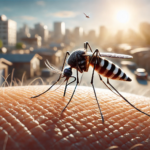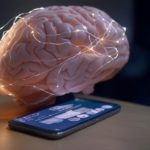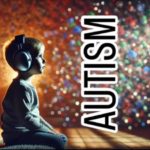Imagine waking up every morning with a thousand thoughts racing through your mind, your attention pulled in all directions like confetti in the wind. Tasks that others find simple—like answering emails, cleaning the kitchen, or even sitting through a meeting—can feel like running a marathon with no finish line. This is the everyday reality for millions of people living with ADHD (Attention-Deficit/Hyperactivity Disorder).
For decades, ADHD has been misunderstood, mislabeled, and often dismissed as a childhood disorder affecting only hyperactive boys. But the truth is far more complex—and far more human. Today, ADHD is finally being recognized as a lifelong neurodevelopmental condition that affects adults as well as children, women as well as men, and often, in ways that are invisible to the outside world.
This article explores the modern understanding of ADHD, why it’s often misdiagnosed, the lived experiences of those who carry it quietly, and how embracing a neurodivergent brain can lead not only to survival—but thriving.
What Is ADHD, Really?
Attention-Deficit/Hyperactivity Disorder (ADHD) is not a lack of attention—it’s a regulation disorder. People with ADHD struggle to manage where their attention goes, when it shifts, and how much energy is devoted to any given task.
It’s like having a Ferrari brain with bicycle brakes.
There are three main types of ADHD:
- Inattentive type (formerly called ADD): Difficulty focusing, staying organized, following through.
- Hyperactive-impulsive type: Restlessness, excessive talking, impulsive decision-making.
- Combined type: A mixture of both symptoms.
ADHD affects the prefrontal cortex—the part of the brain responsible for executive functions like planning, time management, emotional regulation, and working memory. This makes even everyday routines feel overwhelming.
ADHD in Adults: The Silent Epidemic
For years, ADHD was thought to be a condition that children “outgrow.” But research now confirms that up to 70% of children with ADHD continue to experience symptoms into adulthood. In fact, many adults go undiagnosed for decades, living with unexplained frustration, burnout, or chronic underachievement.
Common adult symptoms include:

- Chronic disorganization
- Difficulty starting or finishing tasks
- Trouble prioritizing
- Emotional sensitivity
- Impulsive spending or speech
- Restlessness, even without visible hyperactivity
- Forgetfulness and poor time management
Women are particularly underdiagnosed, as their symptoms often present differently. Instead of hyperactivity, they may internalize their struggles—appearing anxious, perfectionistic, or chronically overwhelmed.
Misdiagnosis and Missed Diagnoses
Many adults with ADHD are first misdiagnosed with depression, anxiety, bipolar disorder, or even personality disorders. This is partly because the emotional effects of untreated ADHD—like low self-esteem, irritability, and chronic stress—mimic other mental health conditions.
Even worse, some individuals are told they’re just “lazy,” “unmotivated,” or “not living up to their potential”—labels that can cause deep, lasting psychological harm.
That’s why accurate assessment by a psychologist, psychiatrist, or neurologist is critical. A full ADHD evaluation includes:
- Clinical interviews
- Behavior and symptom questionnaires
- Cognitive testing
- History review from school, work, and family
From Diagnosis to Discovery: Embracing the ADHD Brain
Receiving an ADHD diagnosis as an adult can be life-changing. For many, it brings a sense of validation—an explanation for years of feeling “different,” overwhelmed, or broken. But beyond the label, it opens the door to self-awareness, self-compassion, and strategies for thriving.
ADHD is not a deficit of intelligence—it’s a difference in how the brain processes information.

People with ADHD often possess:
- High creativity
- Strong intuition
- Rapid problem-solving skills
- Hyperfocus (the ability to dive deeply into tasks that are interesting)
- Boldness and innovation
In other words, when properly supported, people with ADHD can shine brilliantly—not in spite of their ADHD, but because of it.
ADHD and Work: Productivity on Your Own Terms
Contrary to stereotypes, people with ADHD can be highly effective, creative, and results-driven employees—especially when their work environment and tasks align with their cognitive style. The key is not to “fix” the person, but to adapt the workplace to their strengths.
What Makes People with ADHD Valuable at Work?
- Quick adaptability to change
- Out-of-the-box problem solving
- Hyperfocus: the ability to dive deep into interesting projects
- High empathy and emotional sensitivity—great for people-focused roles
- Boldness and innovation in decision-making
Best Career Fields for People with ADHD:
- 🎨 Creative industries: designers, artists, musicians, writers, filmmakers
- 🚀 Tech and IT: developers, UX/UI designers, engineers, startup founders
- 🩺 Healthcare and emergency services: paramedics, surgeons, therapists—where rapid response is key
- 🎤 Media and communications: journalists, marketers, producers, content creators
- 🛠️ Skilled trades and entrepreneurship: mechanics, builders, small business owners
- 🧠 Coaching and neuropsychology: many neurodivergent people help others through paths they’ve walked themselves
It’s important to understand: ADHD doesn’t prevent success—it requires a different strategy. People with ADHD can achieve incredible things when they feel purpose and have the freedom to approach work in their own way.
Unusual and Unexpected Symptoms of ADHD
ADHD isn’t only about being distracted or hyperactive. Many people experience lesser-known symptoms that go unnoticed for years—especially in women and adults.
Here are some surprising signs of ADHD that often fly under the radar:

- 🕰️ Time blindness: an inability to feel the passage of time—leads to frequent lateness, even with good intentions
- 🌪️ Perfectionism and decision paralysis: fear of doing something “wrong” can prevent starting at all
- 📱 Overreliance on external stimulation: constantly switching tabs, doomscrolling, or watching videos to get a dopamine boost
- 🔄 Emotional eating or impulsive snacking: coping mechanism tied to emotional dysregulation
- 🎢 Intense emotional responses — joy, anger, sadness, and excitement all hit at full volume, but pass quickly
- 📦 Hoarding or fear of throwing things away: trouble letting go of items “that might be useful one day”
- 🧭 Difficulty setting priorities: knowing what’s important right now can feel impossible—both in work and daily life
- 🤯 Boredom intolerance: boredom can feel physically painful, prompting the brain to seek immediate novelty
Many of these symptoms are mistaken for personality flaws, rather than being recognized as manifestations of a neurodivergent brain. That’s why understanding the full spectrum of ADHD traits is crucial for acceptance, support, and empowerment.
Treatment Options: From Medication to Mindset Shifts
Managing ADHD usually requires a multi-modal approach—a combination of tools that address symptoms biologically, behaviorally, and emotionally.
1. Medication
Stimulant medications like Adderall, Vyvanse, or Ritalin are often prescribed and can be life-changing for many. They increase dopamine and norepinephrine in the brain, improving focus and executive function.
Non-stimulant options like Strattera or Wellbutrin are also available, particularly for those with anxiety or sensitivity to stimulants.
2. Cognitive Behavioral Therapy (CBT)
CBT helps individuals recognize negative thought patterns and replace them with constructive behaviors. It’s particularly effective for managing time blindness, procrastination, and emotional dysregulation.
3. Coaching and Skill-Building
ADHD coaching focuses on building practical systems for organization, task initiation, goal-setting, and accountability.
4. Lifestyle and Wellness Tools
- Exercise – Boosts dopamine, improves mood, and reduces restlessness.
- Sleep – Essential for regulating attention and emotions.
- Nutrition – Protein-rich diets can support neurotransmitter function.
- Mindfulness – Meditation and breathing exercises help improve impulse control and focus.
ADHD in America and Europe: Growing Awareness, but Unequal Access
In both the U.S. and Europe, awareness of ADHD has grown significantly in the past decade. However, access to diagnosis and treatment still varies widely.
In the U.S.:
- ADHD is widely recognized and diagnosed, especially in children.
- There is greater access to medication, but some adults face stigma or dismissal by general practitioners.
- Insurance coverage and high prescription costs can be major barriers.
In Europe:
- ADHD diagnosis in adults is still catching up.
- Some countries, like Sweden, the UK, and the Netherlands, offer more comprehensive services.
- In Southern and Eastern Europe, ADHD is still underrecognized, and stigma remains high.
Efforts by advocacy groups and public figures are helping shift the narrative, making it safer for people to seek help.
Turning Chaos into Clarity: Real Stories, Real Hope
Living with ADHD isn’t easy. It can mean missed deadlines, forgotten birthdays, emotional outbursts, or years of feeling “not enough.” But it can also mean bursts of brilliance, infectious energy, and fierce empathy.
The journey from chaos to focus is not about becoming “neurotypical”—it’s about understanding your brain, working with it, and designing a life that honors how you function best.
And when you do that? ADHD becomes not a disorder, but a different kind of operating system—one with unique strengths that the world desperately needs.














